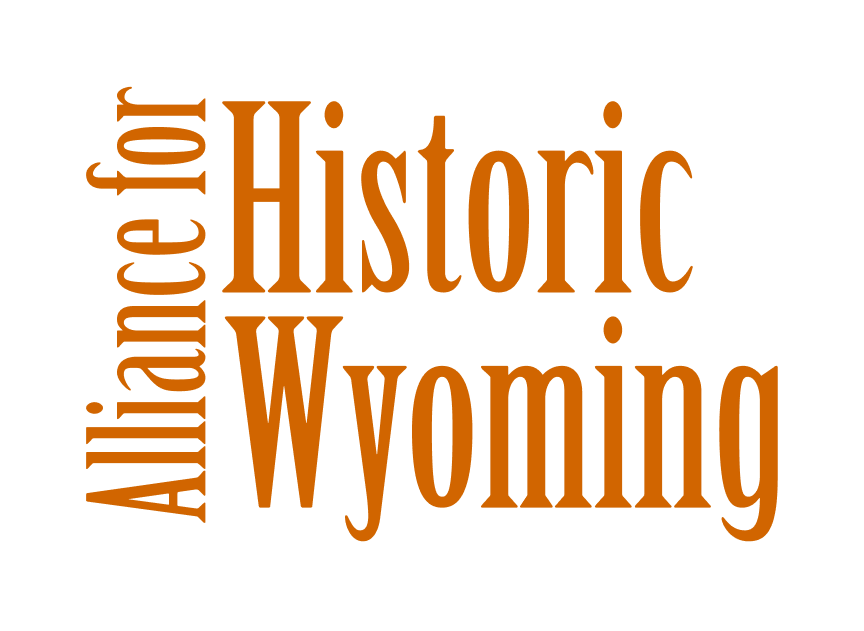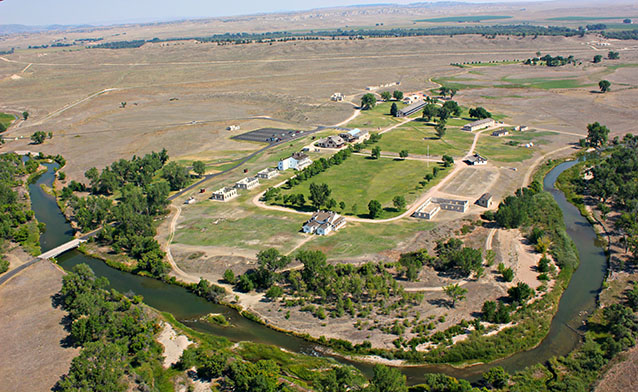By AHW staff
February 18, 2016
In Wyoming’s harsh climate and boom-and-bust economy, many towns that once boasted healthy populations and big dreams have been deserted. In many cases this happened because the town’s lifeblood — often a mine — was either shut down or the resource tapped out, leaving nothing behind but empty buildings and a few loyal local residents who have stayed behind to support the community, like in Jeffrey City. Some towns have been abandoned entirely and only ruins remain, such as the ghost town of Carbon. The best historical record of what the town used to be is often found in the town’s abandoned cemetery. These sites can be tremendously evocative. In addition to offering vivid reminders of the temporal nature of our own lives, they open a window to long-gone chapters of Wyoming’s history. No matter how few the remainders of the town, or what condition those remnants are in, they reach out and grab us, demanding that we consider those who have gone before. Ghost towns don’t stand out against the landscape like towns that are still in use do. Instead, ghost towns have become a part of the historical landscape as a whole, as one element of the grand space that has shown its experience with time. Ghost towns and cemeteries remind us that time has a way of changing things, and that change occurs at different scales. Ultimately, our anthropomorphic scale changes much quicker than our geological companions. The remainders of abandoned towns truly are “ghosts” of civilization, where the power of nature shows its resilience.
Jeffrey City in Fremont County was a uranium mine boom town that emptied quickly when the mine closed. Apartment buildings like the one pictured sit abandoned along the highway, overgrown and decaying.
In a historic cemetery outside of Fort Washakie, Wyoming on the Wind River Reservation, a large granite tombstone bears the name Sacajawea. There are disputes over when and where she actually died after accompanying Lewis and Clark on their expedition across the United States. The account told by the headstone at the cemetery tells that Sacajawea abandoned her French-Canadian husband Toussaint Charbonneau and returned to her Shoshone people in Wyoming, where she lived until she was 100 years old and buried in the cemetery there in 1884. Other stories claim she died in 1812 shortly after the expedition and is buried in South Dakota. Whichever is true, the effect that Sacajawea has on people today is still evident at the Wyoming gravesite, where fresh flowers, memorials, and mementos can always be seen. .
.
The coal boomtown of Carbon was founded in 1868 and was abandoned after coal production decreased and a major fire destroyed most of the town. Here is how it looked at its peak in 1875.
A few stone foundations are all that remain to remind us of the once prosperous town of Carbon, named for the industry it served. Carbon Cemetery
Carbon Cemetery

 One of the important caveats when exploring these seemingly abandoned sites is to remember always to respect private property rights. While it may appear as though no one has any interest in these sites, an owner may still exist. Before exploring, ask some questions to make sure you are not trespassing. The Wyoming Tales and Trails website can help you find some of our state’s wonderful and semi-forgotten locations.
One of the important caveats when exploring these seemingly abandoned sites is to remember always to respect private property rights. While it may appear as though no one has any interest in these sites, an owner may still exist. Before exploring, ask some questions to make sure you are not trespassing. The Wyoming Tales and Trails website can help you find some of our state’s wonderful and semi-forgotten locations.
LIKE WHAT YOU JUST READ?
- Browse our archive of Historic Places and Spaces Profiles by clicking here.
- To learn about all of our campaigns and initiatives, click here.
- Subscribe to our newsletter to learn more about what’s going on in Wyoming.
- Donate or become a member to help us produce stories, organize events, and be a voice for preservation across the state.
- Like us on Facebook, and follow us on Twitter and Instagram to see our latest updates!







2 Comments
byKarla M Westerfield
There is also an old gravesite near the entrance to Pathfinder reservoir. 5 or 6 people buried there.
byAlliance for Historic Wyoming
Thanks so much for sharing!
Comments are closed.